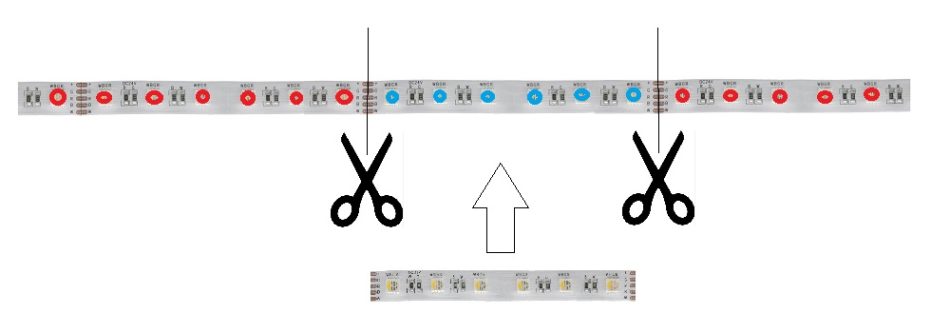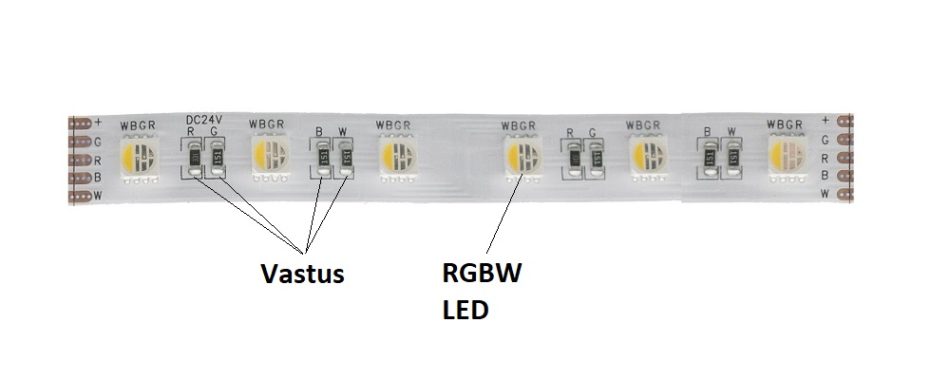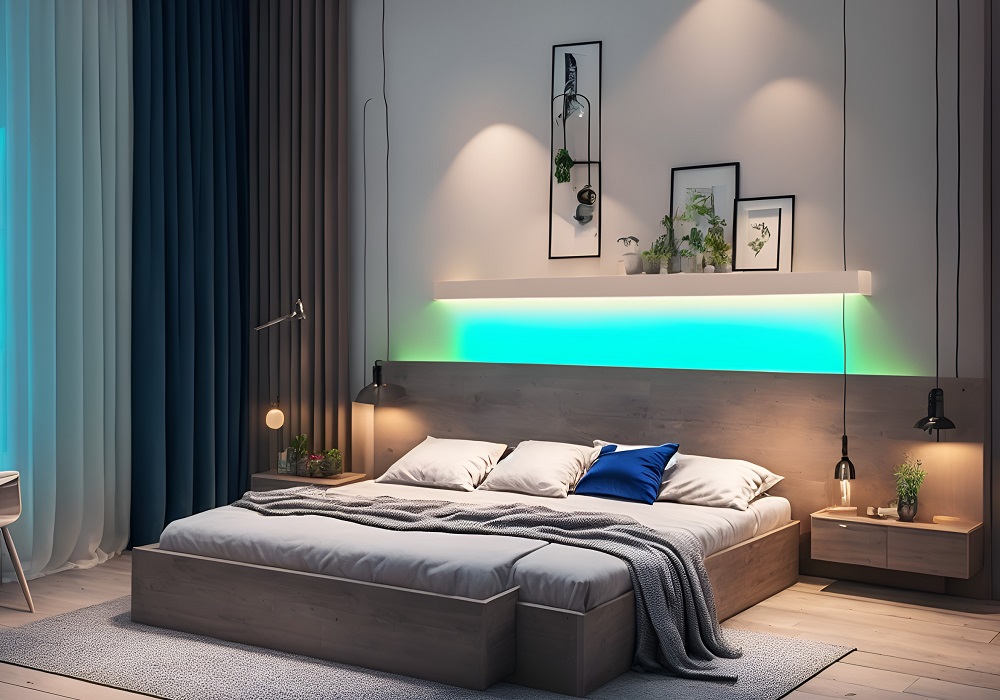Coloured lights are now sold in every supermarket. We have compiled the most common RGB problems here. This is a continuation of the general article on fixing problems with led strips.
RGB/RGBW LEDs show different colours in a few small areas of strip.
Do LED strip typically work for most of their length? Only in one place near the cut point are they not red? It shows that the part in question contains damaged red LED lights. These RGB problems can be easily checked by setting the strip to red and not igniting the faulty parts.
When you insert your first led stripand you notice that the colours don’t match, it can be very annoying. The straightforward explanation, however, is that one of the RGB/W LEDs there needs to be replaced because it is broken. Static electricity, excessive bending and twisting or stepping on it can all break it.
Each segment of the Led strip(5-10cm length) is wired to form its own independent circuit.
In most cases, replacing this part of the strip is the only option. The broken strip is simply cut off and a new 100 mm section is soldered on.

Try pressing damaged LEDs or resistors before doing this. The light should at least come back on automatically. If you know how to solder, you can solve this problem by reheating the joint.
RGBW and RGB LEDs appear in different colours.
If all but one colour of stripLED stripis working and this one colour is not working along the entire length of the strip(for example, all blue LEDs are not working), the problem is with the blue cable soldered to the stripcircuit board or the blue cable connecting stripto the receiver.
Blue LEDs cannot break along their entire length. In contrast, the structure of led strips, due to the way the led is damaged, only affects the space between the cut points. It is therefore a matter of wiring.
If you have used connectors to extend the wires, first make sure that the cables between the controller and the LED stripare functional. Get rid of all controls and extension cables before running the test. Connect the power supply directly to the strip.
Also remember that in RGB/RGBW bands, black is almost always positive (+). Therefore, first connect the positive lead of the power supply to the black lead of LED strip. The blue wire of LED strip must then be connected to the power supply.
Let’s assume that the blue cable connections were the cause of the problem. When they start working, the blue lights should come on to indicate that you have a weak connection elsewhere. Using this information, slowly reassemble the system, including the controller and any extension cables, and determine which component is preventing the blue lights from working.
IF the blue light did not work when plugged directly into the power supply, the LED stripsolder connection is broken and needs to be re-soldered. The RGB problems have been solved.
RGB/W LEDs light only a weak glow.
Usually it’s the RED that glows because they require less power. This means that the 24V led strip are connected to e.g. a 12V power supply or a faulty power supply.
The only option in this situation is to buy another 24v power supply for 24v tapes.
Led striplights show the wrong colour
You have mixed up the wires in the controller. When you select a colour in the controller, the colours will not mix correctly if you connect the red cable to the blue connector and the blue cable to the red connector. You’ll also see different colours of light to the ones you’ve chosen.
Cables must be checked and any cables that have crossed must be rewired in the correct places. You can also check the connections if you have used a cable connector to extend the cable. Do this by first connecting only the positive (+), usually black, cable. Then one colour at a time and test the colour with the remote control. If red is blue, your controller or LED strip has the wrong colour wires. It doesn’t matter, because you just have to find the right wire, which is red, and use it.
When cables sometimes touch, it’s hard to tell what’s going on. For example, if red and blue are touching, you need to separate the wires to make sure the connections are clear, otherwise red and blue will always mix and you won’t get a clean single colour.

The Led light strip emits only either red, green or blue light.
The red and blue lights suddenly stop working. Only the green LED is lit. Led circuits are always connected in series, so if one led chip fails, the others are not affected.
First, do a quick test. In other words, use the RGB controller to change the colour of strip. It is possible that the strip is still in working order, you just need to restart the led strip tape in this situation.
Otherwise, keep looking. Turn on the light strip light to check after the test whether the resistors are damaged. Too much twisting or bending would cause damage to the circuit board, which you should be able to see by testing. Place the screwdriver against the solder of each resistor in turn. Will the light come on? If it fires, that resistor must be repaired or replaced with a defective component along the entire length (usually 10 cm).

RGB problems – led strip light stuck in one colour
At the moment, the LED striplight only shows one colour. You did everything you could, but nothing seemed to solve the problem. Most likely, the controller is stuck in one of the programs. Specifically, the driver settings no longer work correctly.
Start by reconnecting everything. Unplug the power supply. Turn it back on after about five or six seconds. Now test it again. Did it work?
When the striplight band is mixed with white, the end result is reddish.
Voltage drop is the main culprit here. The red chip needs less power to light up because the RGB-led circuit consists of a red, green and blue chip. As a result of the voltage drop, the voltage at the end of the LED stripdecreases. Green and blue chips are less bright because they require more voltage, but the red chip can be as bright as usual, so the end of the LED strip appears red.
- Voltage required for a typical blue LED: 3.0-3.2V
- Voltage required for a typical green LED: 3.0-3.2V
- Voltage required for a typical red LED: 2.0-2.2 V
Led lighting expert
LedStore has been an expert in led lighting since 2010. We have our own product design, so our products are technologically state-of-the-art.
We focus on light colour temperature controlled and high colour rendering index lights. We do around 500 lighting designs in a year.
We offer a service of custom made led strips, i.e. custom made led light strips in profile. Also installed.
Remember that we are always ready to offer our help to you along the way, by email (myynti@ledstore.fi) and by phone (045 251 4510). As always, feel free to share photos of your own projects on social media at ledstore.fi at Instagram and ledstore.fi at Meta. We love to see the cool things done by our LEDs, and it also helps to provide inspiration for those who are not sure about the power and awesomeness of LEDs. Did you know that we already have over 3500 pictures of our LED installations in our Gallery!
Led Lights Gallery:
Product gallery: Pictures of products in different installation locations
Indirect light: Indirect light in different spaces
Room-specific: Light in different rooms
References: Complete houses that have been photographed

